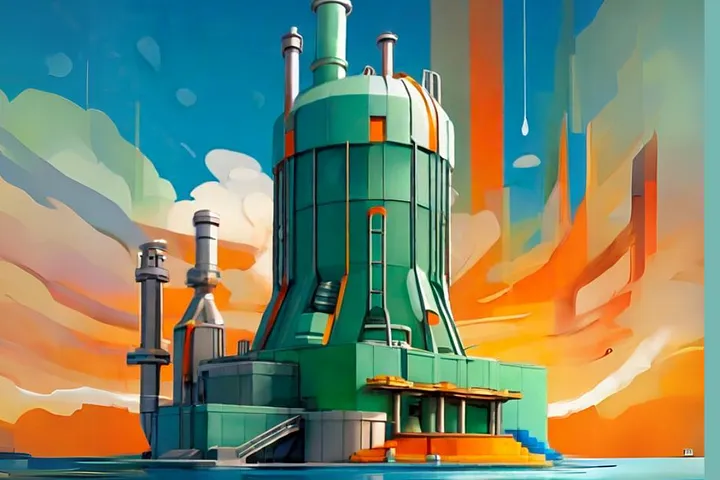Author: Kiersten Sundell

What is a fast reactor, and how is it any different from a… normal reactor?
Think of it this way. A ‘normal reactor,’ more correctly identified as a light-water reactor, is kind of like… stay with me… your typical landfill. They’ve been around for a long time, the technology is only as complex as necessary, engineers are well-versed in building them, and most importantly, there’s a lot of useful material that’s just thrown away. Light-water reactors are by far the most common reactor type, and they operate using standard resources like U-235 & U-238. The downside is that they require new fuel to be mined constantly, and disposal has presented a political challenge.
But what if I told you there was a reactor that could run on recycled nuclear waste, and instead of producing more waste, it actually produced more usable fuel? Here’s where fast reactors come in. They’re something like the recycling centers of the nuclear world. They are a bit harder to engineer and cost more to implement, but they can run on reprocessed waste, and they produce, or “breed” new material in the end.
You read that right: fast reactors produce energy using recycled nuclear waste, and generate new fuel in the process by transforming Uranium-238 into Plutonium-239. This is called transmutation. Fast reactors utilize high-energy neutrons that collide in a controlled chain reaction, generating a ton of heat energy.
Believe it or not, the first-ever U.S. power reactor was a fast reactor. Its successor, the EBR-II, was awesome. It recycled nuclear waste and even did a test to show it was meltdown-proof purely by the physics of the reactor. It ran for 30 years and a lot of what we learned from it is being applied to current projects like Oklo, Terrapower’s Natrium, and Marvel.
But back to my first point. If fast reactors can efficiently recycle nuclear waste and produce new fuel, why aren’t they everywhere?
Well, perhaps it’s for some of the same reasons why there isn’t a recycling center in every town. They come with a hefty price tag, demand advanced engineering, and aren’t the easiest option available. Would they be better for the earth? Yeah. But everything in business and politics is about money, and fast reactors just aren’t as economical as light-water reactors.
Working with highly reactive sodium as a coolant presents its own challenges, and the higher neutron flux in these reactors can make the core brittle, requiring specialized alloys to withstand neutron damage.
Engineers have yet to develop an economically viable model, and apart from a few projects like Oklo and Natrium in the U.S. and Russia’s BN-1200, commercialization of fast reactors isn’t a widespread pursuit. Additionally, nuclear regulations in the U.S. are primarily tailored for light-water reactors, and it would be a complex and lengthy process to establish new regulations.
Some people say it’s time to give up on fast reactors, and that continued research and development is a money pit. Light-water reactors haven’t failed us yet, and we’re getting even faster at building them with every new project the industry completes.
What do you think? Is innovation the way of the future, or should we be focusing on tried and tested technology to mitigate climate change?
Let us know by visiting our TikTok page!

